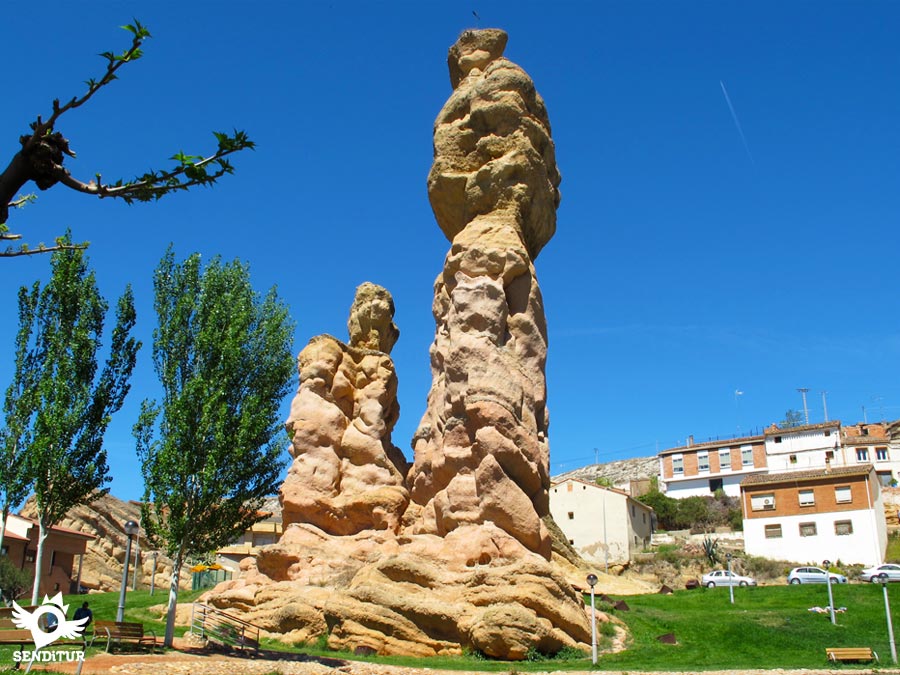It is located in the Cidacos Basin, between Peña Isasa and Sierra de Yerga. Autol dates back in history, as evidenced by the Celtiberian remains of ceramics found, until the sixth century BC. It appears for the first time in a writing with the name of Abtole.

On the banks of the Cidacos, in this village, the battle of Tseima took place, in which Muza, governor of Zaragoza, joined the Christian king of Navarre and defeated Abderramán, caliph of Córdova, against whom he had revealed himself.
The Monte de Yerga stands out for its wild beauty and its extension, ideal habitat for, among other animals, roe deer and wild boar. About 12 km away, in the middle of the mountain, are the ruins of the hermitage of Santa María de Yerga, whose carving is venerated today in the parish church. What remains of this hermitage seems to be from the 12th century. This sanctuary was the first one that installed the order of the Cister in the Peninsula, the eremitic regime of the beginnings of this order took them to settle in the top of the Yerga, but soon they moved to the valley of the Alhama, founding the monastery of Fitero, that was one of the most important of the Cister in Spain.

It is also well worth a stroll through its Old Town, with its remains of ancient Arab urbanism; its emblazoned houses from the 17th-18th centuries; the ruins of its castle, at the top of the hill; and of course a visit to the true guardians of the town, El Picuezo and La Picueza, sandstone monoliths, jewels of nature, 45 m. high which is given the male name and 30 m. high the second.
Autol celebrates its patron saint fiestas on 7 September in honour of San Adrián and Santa Natalia. On August 4th and 5th, the festivities of its patron saint, the Virgin of Nieva, and in February San Blas.
The image of the Virgin of Nieva is moved to the parish church in procession on the eve of the festivity, strolling it through the village two brotherhoods, one of men and another of women, and returning it to its hermitage the next day.

On the last Saturday of June the Cofradía del Santísimo de Autol, stages El Miserere de Yerga, based on El Miserere de Bécquer, inspired by the ruins of the first Cistercian monastery in Spain, located on Mount Yerga.
One of the legends about El Picuezo and La Picueza tells that the Lord of the castle had a very special vineyard that gave exquisite grapes and that someone was stealing them. One night, the guard caught a couple hiding something in a basket, asked them to show him the contents, suspecting it was the grapes, which the couple refused, saying: that we become stones if grapes are what we carry here, and was so it
MORE ROUTES AVAILABLE, DON'T MISS IT...
MORE PLACES AVAILABLE, DON'T MISS IT...
To get to Autol you can take the LR-115 either from Arnedo via Quel or from Rincón de Soto via Aldeanueva. Also from Calahorra following the LR-134 in Arnedo direction we will find the detour with the LR-282 that leads directly to Autol.
Autol has an intercity bus service and a stop on the regular daily service from Monday to Friday on the Logroño-Arnedo route.
SENDITUR is not responsible for any variation in the information described, as well as for the misuse of its guides and recommends that everyone be responsible and prudent in carrying out the activity. Likewise, we invite you to document yourself with books and specialized guides to complement the information described. From the commitment of SENDITUR with Nature and the respect to the balance of the environment, SENDITUR urges you to travel in a responsible way, with low environmental impact and respecting at all times the Natural, Cultural and Social environment wherever you go. For any suggestion, SENDITUR invites you to send an email to .
Continue watching …